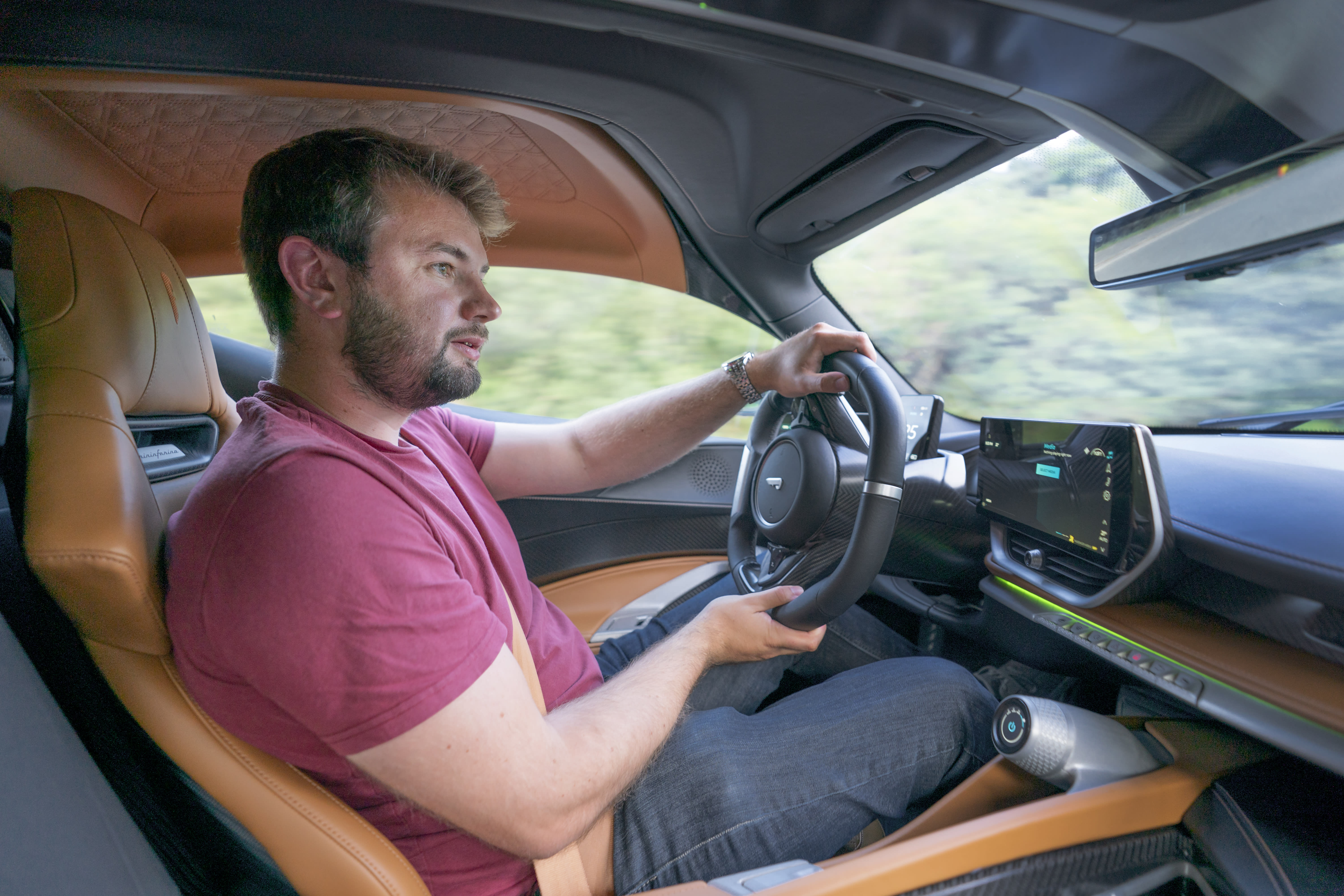
Hyundai i10 Review

Introduction
Small cars are big business, with superminis such as the Volkswagen Polo, Ford Fiesta and Vauxhall Corsa regularly appearing among the most popular models in the UK. But the market for smaller cars, city cars, is shrinking amid tight profit margins and supply issues. Big names including Skoda, Citroen and Seat have pulled out of the market, leaving the door open for companies such as Hyundai.
This is the i10 – a compact hatchback that has long been a contender in this class – and it’s now one of the biggest names available. But is this inherited title deserved, and does this little South Korean hatchback have the appeal to become the car of choice in this shrinking market?
Select's rating score* - 4 / 5
At a Glance
Under the skin, the i10 is much the same as it was when the current-generation car was launched in 2013, but fresh styling has helped to keep the car up to date. Now one of the most stylish cars in its class, the Hyundai mixes mature design with a more modern, spaceship-esque aesthetic.
The cabin is a little less futuristic, but Hyundai has worked hard to ensure it feels fresher and more premium than those of its rivals. Where a Volkswagen Up!’s cabin is full of cheap plastic and aging features, the i10 feels every inch the new car. Yes, it’s built to a price, but it doesn’t feel crummy or tacky.
With no electric option, there’s a choice of three 1.0- and 1.2-litre petrol engines, each with differing power outputs. The basic 67hp version is joined by a more powerful 84hp option and the 100hp version. None is fast, but the i10 doesn’t need to be. Instead, it’s easy to drive, relatively comfortable and fairly economical, returning well over 50mpg on a long run.
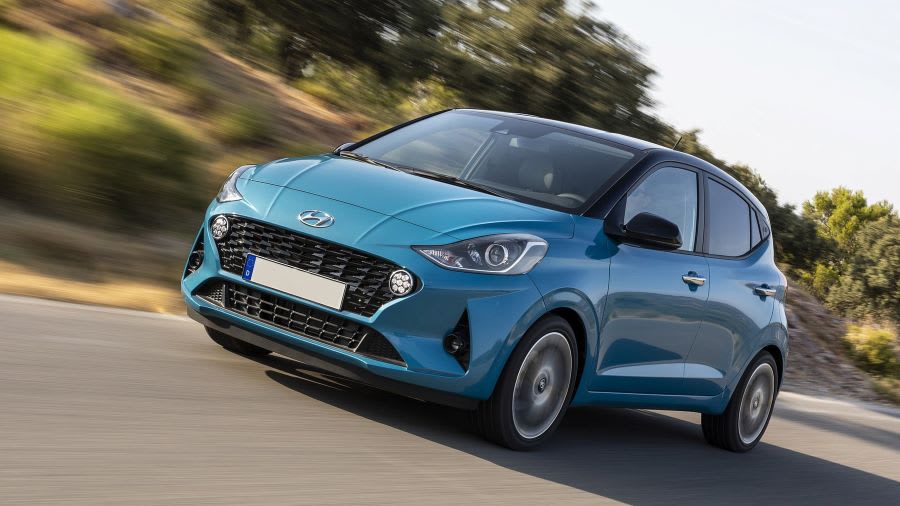
Key Features
The i10 has positioned itself at the mature, considered end of the city car market, away from the funkiness of the Honda e and the youthfulness of the Volkswagen Up!. Instead, this car is designed to be solid and dependable and easy to use – the perfect companion for pottering around town.
To that end, it comes with classy but quite understated styling, which makes it appear larger than it actually is, and plenty of on-board space. There’s a big boot into which you can throw most things without thinking about it, and enough space to seat four adults without bending any spines too much. It’s hardly the last word in practicality, but it’s a solid showing for a bona fide city car.
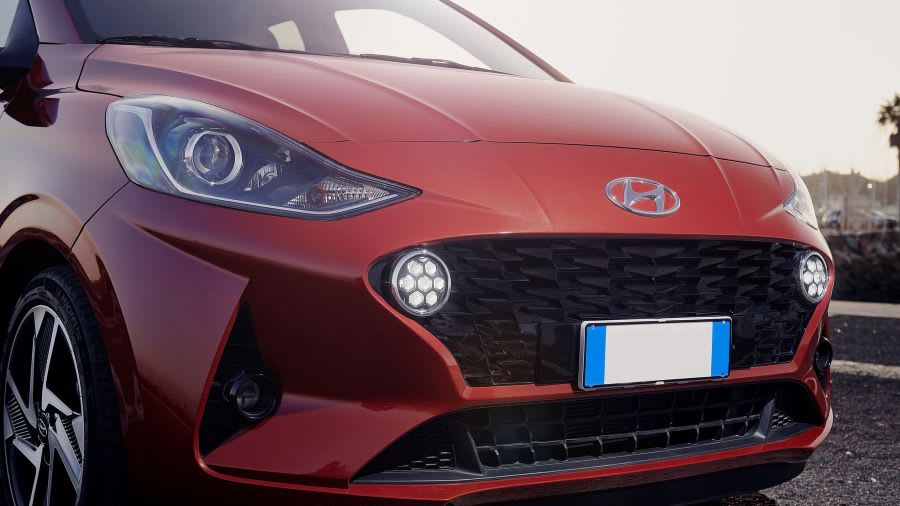
Performance & Drive
When you pick an i10, you essentially get a choice of three different engines, but all three are small petrol-powered units. The basic option is the 1.0-litre, 67hp three-cylinder engine, which comes with a five-speed manual gearbox as standard. However, you can choose to upgrade to the automated manual transmission, which effectively works like an automatic.
Choosing that automated gearbox has a fairly catastrophic impact on performance, though, and the 67hp i10 was hardly rapid in the first place. The standard car takes 14.8 seconds to lope to 62mph, but the automated manual gearbox makes it a full three seconds slower.
For slightly less glacial performance, there’s a 1.2-litre, four-cylinder petrol engine that churns out a slightly more promising 84hp. A 12.6-second 0-62mph time for the standard five-speed manual is hardly electrifying, but it’s respectable enough in a car such as this. Teamed with a 106mph top speed, it’s more than adequate for anybody’s needs, although excitement is in short supply. Again, though, choosing the optional automated manual gearbox adds three seconds to the 0-62mph time, albeit at no cost to the somewhat less relevant top speed.
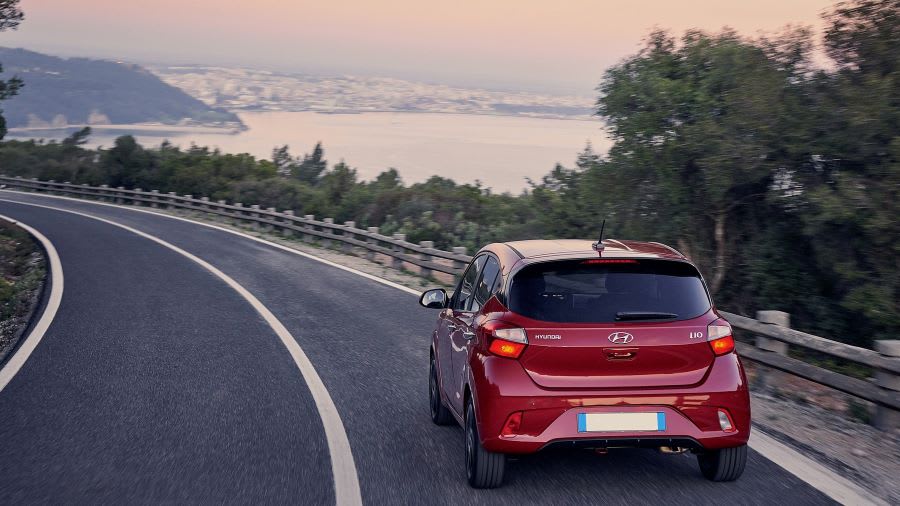
The third option is the 100hp 1.0-litre petrol engine, which is reserved for the more sportily styled N Line model. That too comes with a five-speed manual gearbox, but it has a respectable 10.5-second 0-62mph time and a top speed of 115mph. It’s relatively punchy for such a small car, and there’s no option of an automated transmission to hold it back.
In truth, that engine isn’t really necessary, because the 1.2-litre option will be powerful enough for most. In cars of this size, performance is rarely impressive, but the 1.2-litre engine is quite smooth and relatively refined, although it will make a bit of a racket if it’s pushed. Not that the i10 really encourages fast driving. The high roof means it rolls in corners, while the steering is light and lacks feel, which makes it less than ideal on country lanes. That said, it’s great around town, allowing the i10 to feel light and nippy.
In fact, all the controls are light and require minimal effort to operate, which means even the manual car isn’t too difficult to paddle around your local town centre. The ride is naturally a little bumpy – the short wheelbase sees to that – but it’s more composed than most and it settles down at higher speeds to become a surprisingly competent motorway car. Crosswinds don’t do it many favours, but by and large it’s an adequate cruiser.
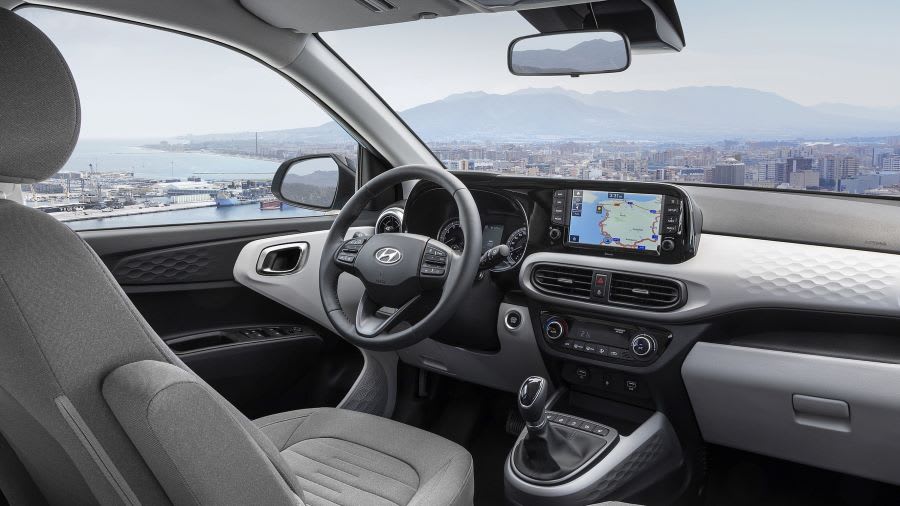
Running Costs & Emissions
Perhaps unsurprisingly, the most economical engine option is the 1.0-litre, 67hp petrol that underpins the range. In basic SE trim, with the 14-inch steel wheels, it returns 56.5mpg on the official economy test, while emitting just 114g of carbon dioxide per kilometre. That makes it relatively easy on company car tax, but it’s only marginally better than its siblings.
All three 1.0-litre engine options are parsimonious, with pretty much all achieving 50mpg or more on the official economy test. Only the 84hp engine with the automated manual gearbox slips below the 50mpg mark in Premium trim, and then only by 0.4mpg. Even the N Line’s 100hp petrol engine manages more than 52mpg. And with CO2 emissions maxing out at 126g/km, no i10 is going to be an expensive option for company car drivers.
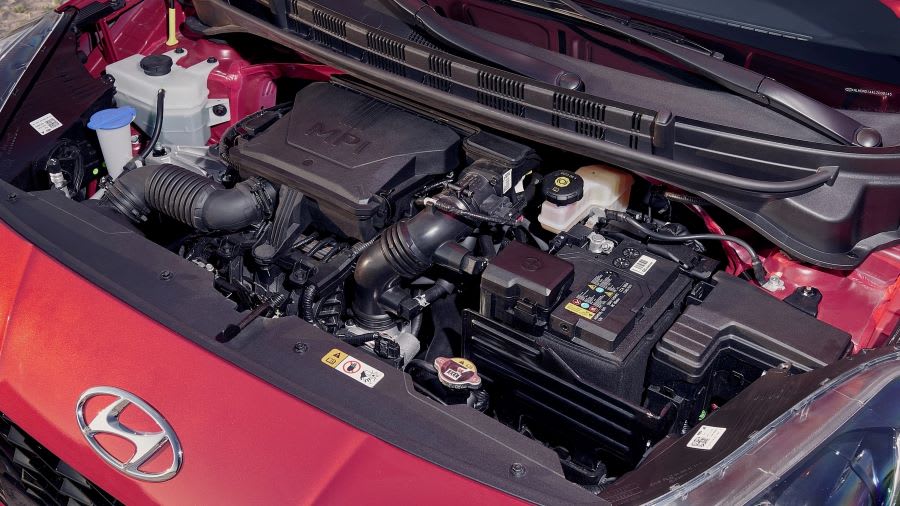
Interior & Technology
The i10’s cabin is not especially inspiring, despite an obvious attempt to jazz it up with textured trim on the passenger side of the dash. But this is a cheap, compact city car and we’ve been spoilt by more expensive fashion accessories such as the Fiat 500. The i10 feels altogether more mature, with strong ergonomics and solid build quality.
As is so often the case with cars of this size, some of the materials are a little cheap – profit margins are tight at this end of the market – but the i10 has much better build quality than some of its European counterparts, with most of the switchgear and panels feeling noticeably robust under your fingers.
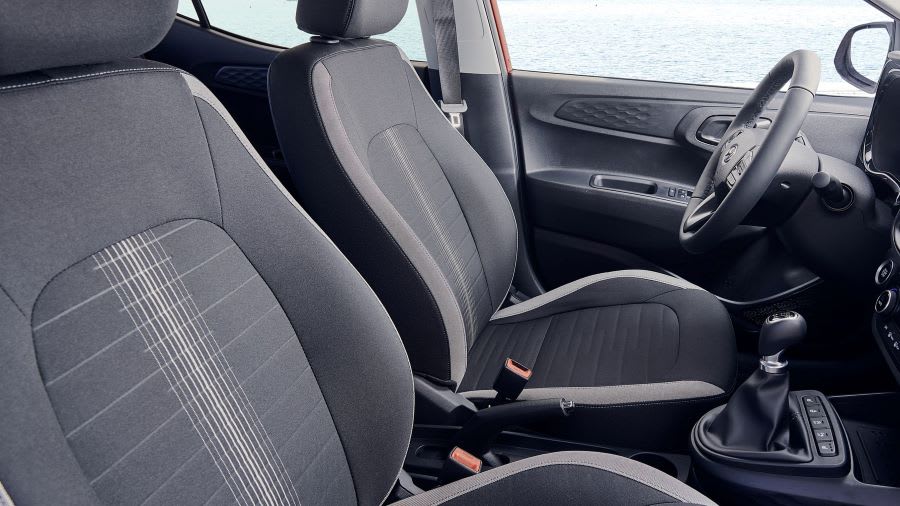
The dashboard is relatively simple, but every model except the basic SE version comes with a touchscreen infotainment system. It isn’t the most advanced touchscreen in the world, but it’s really intuitive and easy to use, which prevents it from being too distracting on the road. It’s even mounted high in the dash, allowing you to use your peripheral vision when operating it on the move.
Because satellite navigation is not standard on any trim level, the inclusion of the Android Auto and Apple CarPlay smartphone integration tech is especially welcome. Not only does that allow you to use your phone for navigation, but it’s also a much neater way of accessing media and other features found on our mobiles. It looks slightly more modern than the standard infotainment displays, too.
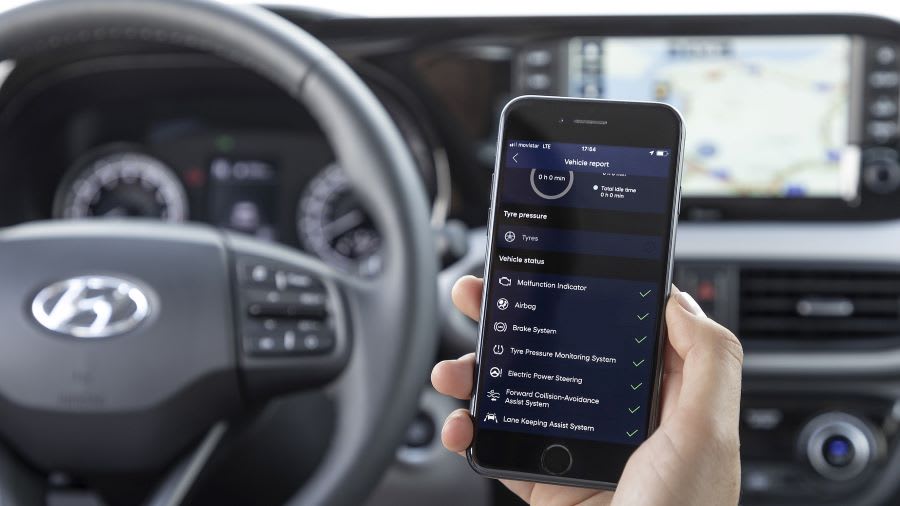
Practicality & Boot Space
With such a small footprint to play with, city cars such as this are seldom the most spacious cars on the market. Which means the 252-litre boot in the i10 is not to be sniffed at. Admittedly, it doesn’t sound that sizeable – there’s almost as much space in the front of a Ferrari 296 GTB supercar – but it’s significantly more spacious than a Fiat 500. It’s enough to swallow shopping, school bags and anything else you might regularly carry, but it’ll be a bit tight for family holidays.
It’s a similar story in the cabin, where the driver and front passenger are flush for space, but room in the back is a little more limited. At a pinch, you might get four six-foot adults in there, but good luck trying to fit five inside. Kids will be fine, though, and they might even cope with three across the rear seats, assuming the legalities of booster seats and the like can be met. It’s probably best you don’t leave them cooped up in there for too long, though, because space isn’t that plentiful and it is a little dark back there.
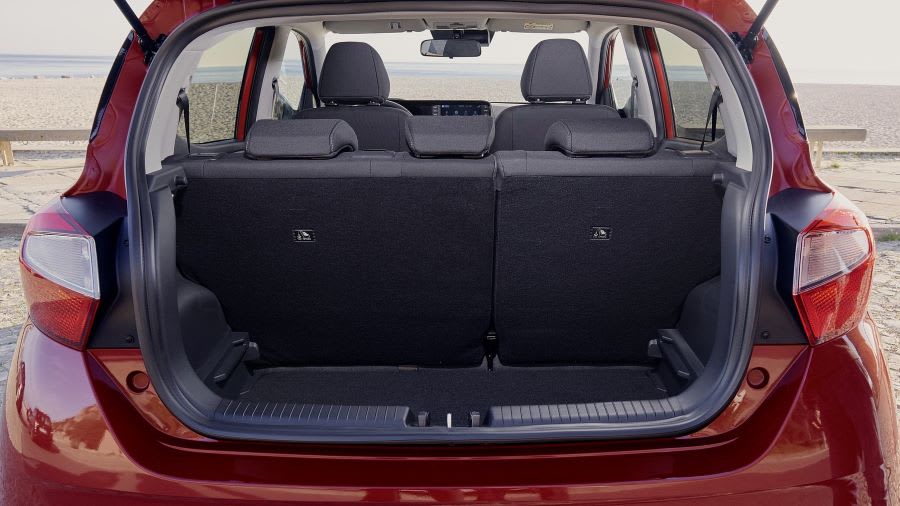
Safety
The i10 didn't fare especially well in the Euro NCAP crash test in 2020, when it achieved a three-star rating. That isn't particularly impressive, but it's far from the only small car to hit a less-than-perfect score. The now-defunct Toyota Aygo only managed three stars when it was tested in 2017, and the same goes for the Kia Picanto and the Fiat 500. In short, the crash test favours larger models, and the i10's score is par for the course.
That said, it comes with plenty of safety equipment as standard, helping to make sure accidents don't happen in the first place. Autonomous emergency braking will automatically slow or stop the car if the driver fails to respond to a hazard, while lane departure warning will alert you if the car starts to drift out of its lane.
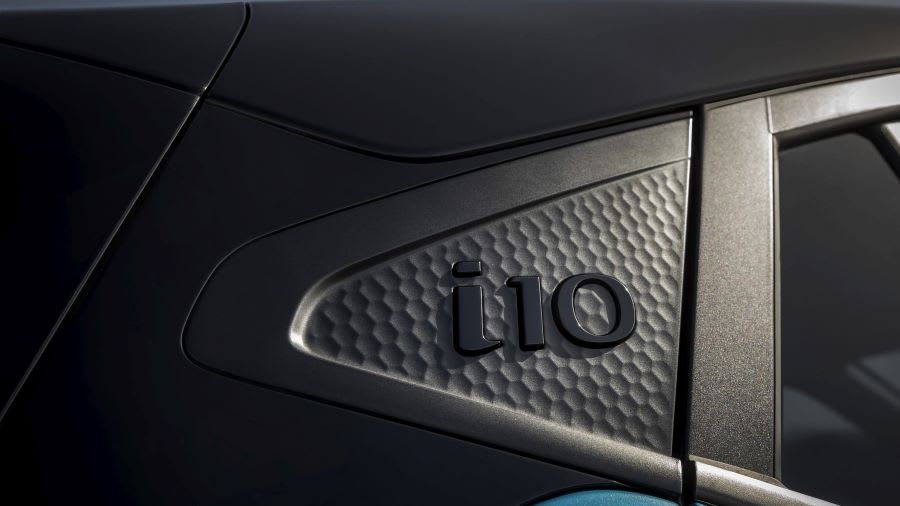
Options
Hyundai i10 customers get a choice of four different trim levels, with the SE model representing the entry-level option. That car comes with manual air conditioning and cruise control, as well as Bluetooth connectivity and 14-inch steel wheels. It’s a fairly basic trim level that doesn’t provide many luxuries, but it does come with plenty of safety equipment.
Stepping up to the SE Connect provides a few more creature comforts, including an eight-inch touchscreen infotainment system, 15-inch alloy wheels and even a rear-view camera, but the mid-range Premium is even more generously equipped. That car comes with LED daytime running lights, privacy glass and climate control, not to mention heated front seats, 16-inch alloy wheels and a heated steering wheel.
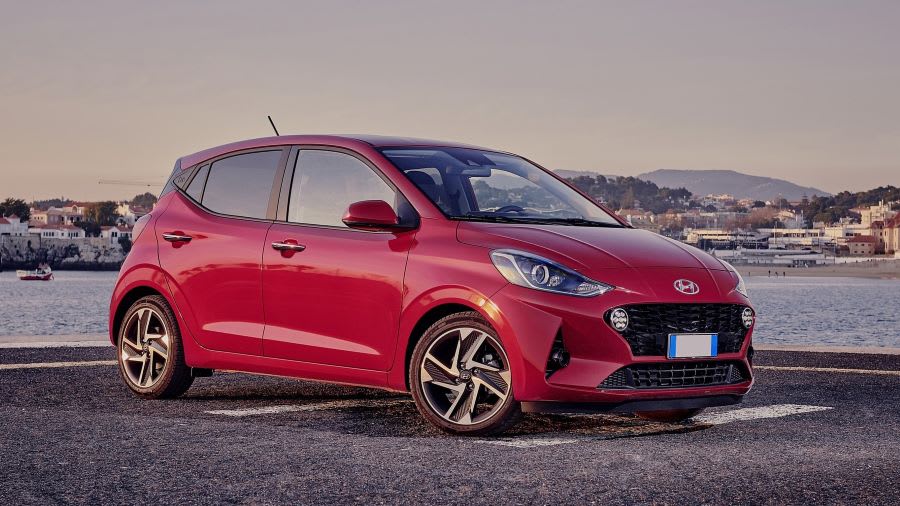
But perhaps the most appealing model in the range may well be the N Line, which gets similar equipment to the Premium model. It does miss out on the heated seats and heated steering wheel, but it gets a sporty N Line body kit, red exterior trim and the N Line interior with red stitching.
The options list is longer than you might think, with customisation options including a wide selection of paint colours, a contrasting roof colour and a handful of other goodies. These include wireless phone charging, which may appeal to some customers, and satellite navigation, as well as Hyundai’s Bluelink connected car technology.
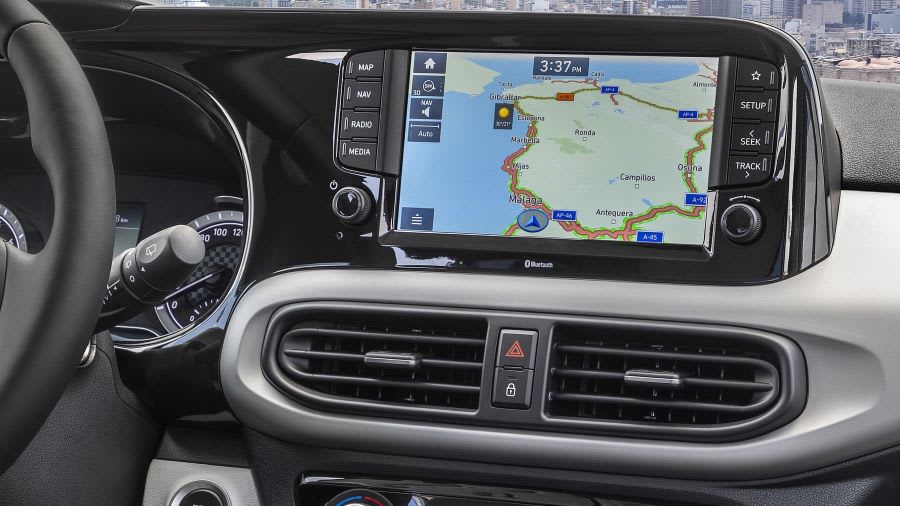
Rival Cars
The i10 is competing with an ever-shrinking collection of small cars, but it still has some powerful rivals to contend with. Chief among these is the Volkswagen Up!, which has outlived its Skoda- and Seat-badged siblings to become the Volkswagen Group’s sole city car. Even so, it’s a formidable opponent, with cool styling and lively handling. In its more powerful forms, it’s a really enjoyable car to drive, but although there’s a VW badge on the front, tight profit margins and an aging design mean some of the plastics feel a bit low-rent.
Another key rival is the new Toyota Aygo X, which has taken the Aygo formula and developed it to create something with some SUV pretensions. That makes it more interesting than most small cars, but it doesn’t come cheap and although it looks funky, it won’t be to everyone’s taste. If you want something more stylish, the Fiat 500 will probably be for you, although that’s a fundamentally flawed car with questionable quality and reliability. But it’s cute and it drives surprisingly well, and that will be enough for many customers.
Perhaps the i10’s closest rival is its sister car, the Kia Picanto. Like the i10 it’s a small, South Korean city car with a little engine and decent boot space, and although it looks charming enough, it’s definitely more sensible than stylish. The long warranty promises reliability, but it doesn’t feel quite as upmarket as the i10, and it’s starting to show its age.
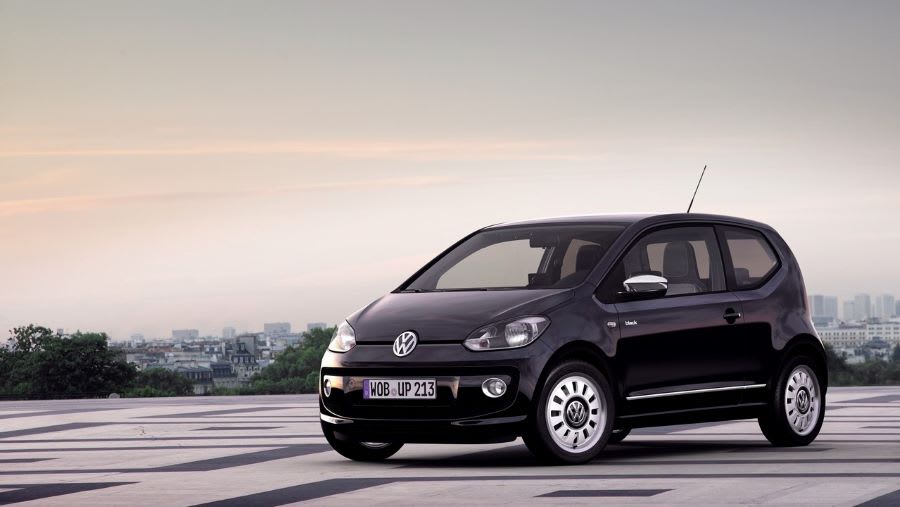
Verdict & Next Steps
Merging the solidity we’ve come to expect from Hyundai’s with some mature-yet-appealing styling, the i10 is one of the best city cars in the class. It isn’t as exciting as some, but it’s spacious, well built and easy on the eye, as well as being surprisingly practical.
The funkier Volkswagen Up! arguably remains the car to beat, but the i10 is a compelling alternative for those who prefer something more grown up.
Where to next?
View our latest Hyundai i10 Leasing Deals - from just £160.09 per month inc VAT**
Looking for a great leasing deal? Check out our incredible range of Special Offers
New hatchback? Read our latest Car Reviews and find the right model for you
Want to know more about leasing? Take a look at our comprehensive Leasing Guides
Interested in everything motoring? Why not catch up on all the latest Car Leasing News.
*Score based on Select’s unique meta score analysis, taking into account the UK’s top five leading independent car website reviews of the Hyundai i10
**Correct as of 18/03/2022. Based on 9 months initial payment, 5,000 miles over a 48 month lease. Initial payment equivalent to 9 monthly payments or £1,440.81 Ts and Cs apply. Credit is subject to status.
